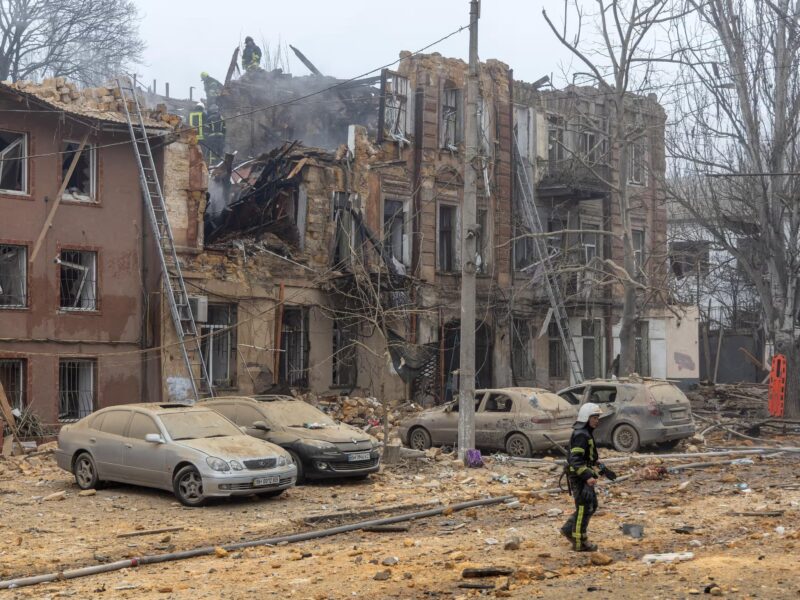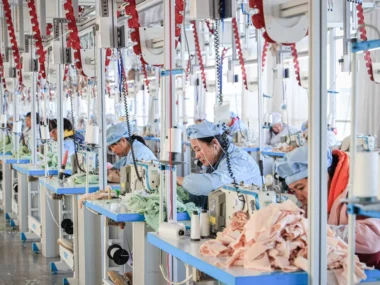Call comes as a research estimated reconstruction costs at roughly $500 billion since the start of the conflict.
Ukraine has called for frozen Russian assets to be used to rebuild the country’s war-torn economy, after a survey revealed that the cost of rehabilitation had risen to about $500 billion.
In their third assessment of the likely cost of recovery and reconstruction following Russia’s invasion two years ago, the World Bank, Ukraine’s government, the European Commission, and the UN stated that the war had caused the economy to shrink by more than 25% and was a “dramatic setback” to Ukraine’s development.
Denys Shmyhal, Ukraine’s prime minister, stated that “the needs for reconstruction have continued to grow over the past year.” The expropriation of Russian assets frozen in the West should be the primary source of Ukraine’s recovery funds. “We need to start this process this year.”
An estimated $300 billion in Russian assets have been frozen since the conflict began in February 2022.
According to the assessment, the direct damage to Ukraine was $152 billion, but the 10-year cost of putting together the country’s critical infrastructure, such as houses, roads, trains, and power plants, would be substantially higher at $486 billion, up $75 billion from the previous year’s report.
Ukrainian authorities predict that the country would require approximately $15 billion in 2024 for immediate reconstruction and recovery priorities, with only $5.5 billion secured from foreign partners and domestic resources.
“The last two years have seen unprecedented suffering and loss for Ukraine and its people,” said Antonella Bassani, the World Bank’s Vice President for Europe and Central Asia.
“Yet, while this updated assessment chronicles the severe damages and resulting requirements, it is also a monument to Ukraine’s resilience, indicating that its people’s determination and adaptability have already helped to heal some of the harm and build toward recovery.
The study, which ran until the end of 2023, stated that “regular, intense” strikes on infrastructure had continued, with unpredictable air and drone bombardment reaching outside established and generally unchanging fighting zones and affecting cities including as Kyiv, Odesa, and Lviv.
The destruction of the Kakhovka dam and hydropower plant in June 2023 has had significant environmental impacts and exacerbated challenges for people accessing housing, water, food, and health services. Additionally, there have been serious attacks on ports in Odesa and Mykolaivska regions and along the Danube River, as well as cyber-attacks and increased drone and air attacks.
Direct damage had not increased significantly since the second assessment covering the first year of the war, when it totaled US$135 billion (€126 billion), owing to modest movements on the front lines of war. Despite this, the impact on Ukraine was significant, with 10% of the housing stock damaged or destroyed.
As a result, millions of people had lost their houses and were looking for shelter among a dwindling pool of available properties. Other sectors suffered substantial damage, including forestry, irrigation, water supply and sanitation, municipal services, emergency response and civil protection, trade and industry, and culture and tourism.
“As of end-December 2023, recovery and reconstruction needs are estimated at US$486bn (€440bn), which is approximately 2.8 times the estimated nominal GDP of Ukraine for 2023” according to the research. “These considerable needs arise from a war that has spanned a large geographical area (including urban areas) for an extended period of time.”
Despite the ongoing fighting, the study stated that Ukraine has begun recovery and restoration operations, aided by financial support from donor countries and international organisations.
In 2023, restoration work was completed on 3,836 multifamily apartment buildings and 19,091 single-family houses, as well as 448 schools, 237 kindergartens, 390 medical facilities and social protection institutions, 9,200 critical infrastructure facilities, 449 heating supply facilities, and 221 water supply and sanitation facilities.











